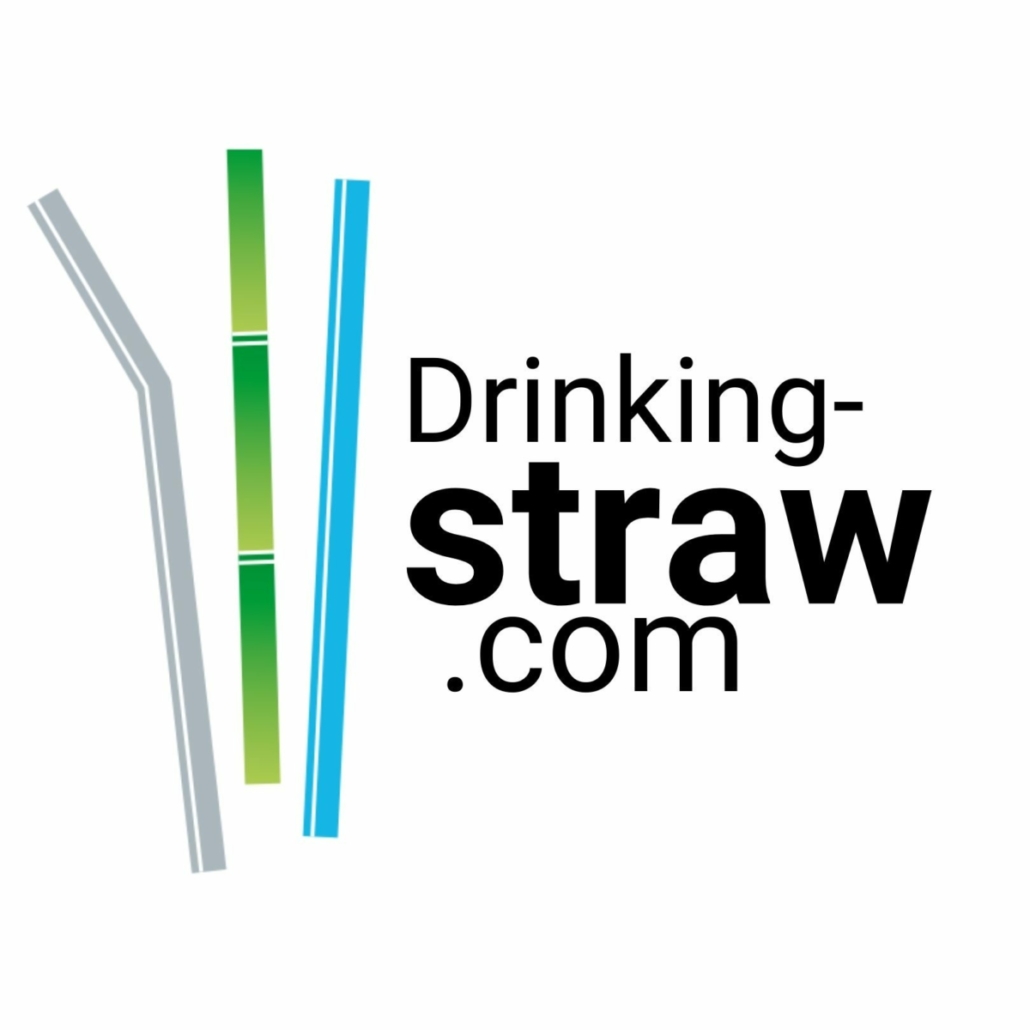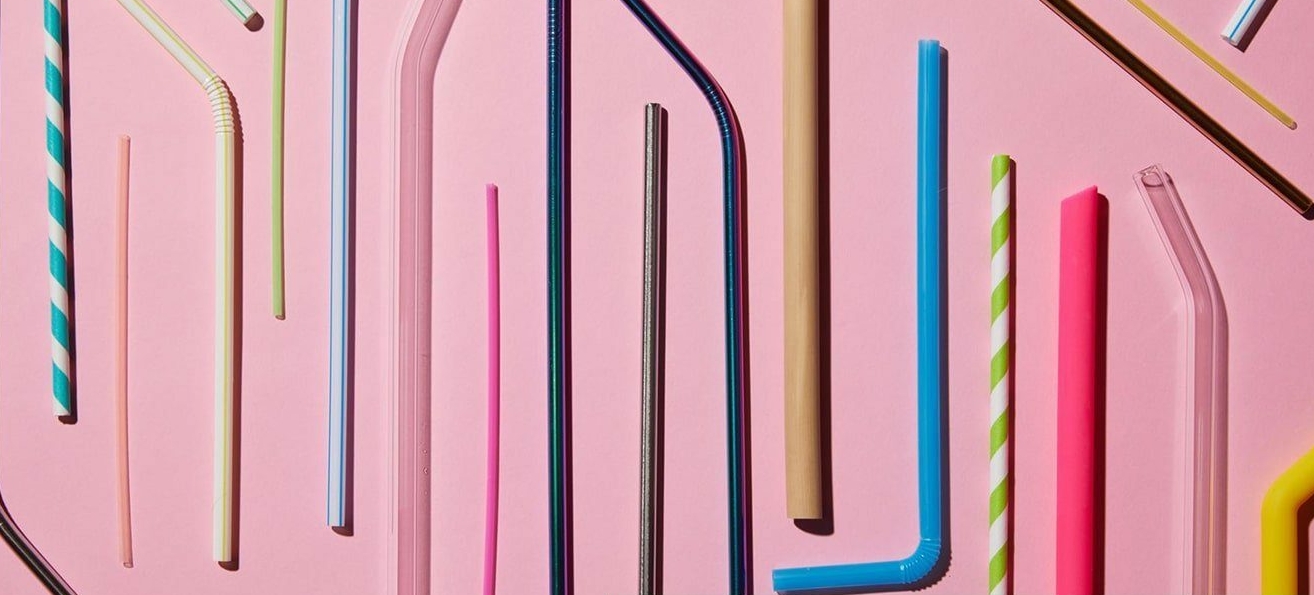What are the alternatives to plastic straws?
It is often prohibited by city councils, businesses, and governments. Will the plastic straw soon deplete its reserves? What additional choices do we have for enjoying our drinks and smoothies with a straw?
Why will the plastic straw disappear?
Development and growth of plastic
Only now are we becoming aware of the challenges at hand, as well as the serious environmental effects of single-use straws!
Plastic pollution becomes one of the most serious environmental problems. Since 1950, 9 billion tons of plastic have been created, with over 8 million tons of plastic debris poured into the oceans each year. Only 9 % of this is recycled, and 11 % is incinerated*.
The first plastic straw was invented in the late 1800s. Because of their small size, they are difficult to recycle because they pass past the filters. This packaging/accessory is among the most common types of plastic debris discovered during beach cleanups. They are also dangerous and lethal to aquatic life. Many animals eat them, and many become trapped in them: everyone recalls the video of the turtle with a straw stuck in its nostril…
Plastic straws pollution
Every day, 500 million straws are used in the United States, and 1 billion worldwide. In France, it is likewise 8.8 million. Straws are now among the most often recovered garbage on beaches, with over 500 million straws in our waters. They not only pollute and jeopardize the preservation of our oceans, but they also risk the protection of our land and creatures. Especially considering they take 100 to 1000 years to vanish. Straws are also covered with harmful materials that can cause illnesses in both humans and the environment.
These statistics are sufficient to demonstrate the serious nature of the crisis, and several photographs and videos are circulating to demonstrate the severity of the issue.
Is it the consumer’s fault?
Plastic manufacturers frequently respond that plastic pollutes the waters for behavioral reasons. According to them, the issue is not the plastic itself, but the general public’s habit of throwing straws and other throwaway plastic debris around. Also, the recycling chain is not being treated efficiently enough. But is pointing the finger at us (consumers) truly the answer?
These same businesses expand plastic output by roughly 8% from one year to the next in response to high demand, according to them.
As a result, it is our obligation and urgency to mobilize and provide a less harmful alternative promptly, everywhere, and in big amounts. Distributors must come to our aid and suggest a large consumption of ecological straws. The same is true for restaurant owners and their patrons.
What role do governments engage in banning plastic products?
A common understanding
Environmental challenges are becoming increasingly important, and governments are recognizing this. Every year, new countries pass regulations to decrease our environmental impact, such as banning plastic straws. Public awareness and “shock” movies of turtles or other creatures in plastic are sufficient to demonstrate the catastrophic nature of the crisis, and numerous projects and actions are being undertaken to combat plastic in order to save our world. Indeed, businesses declare that they intend to eliminate or limit their use of plastic straws.
Governments have an important role.
Governments are taking steps to reduce or even prohibit the usage of these harmful disposable objects.
Associations are increasing public awareness in order to mobilize people against the usage of plastic.
The objective of UN Environment’s #Cleanseas campaign is to encourage governments, the public, and the commercial sector to participate in the battle against marine pollution.
Bangladesh was the forerunner of this effort, having banned plastic bags in 2002 after becoming aware of the problem. Since then, Canada, China, the United Kingdom, and other nations have prohibited the use of single-use plastic items such as straws. Plastic straws are also prohibited in European Union member countries. According to data, this rule will save consumers 6.5 billion euros** while preventing 3.4 million tons of CO2 equivalent.
Furthermore, some states are further forward in this regard. Costa Rica, for example, outlawed all single-use plastic items in 2017 and has given itself till 2021 to do so!
Focus on the French ban against plastic straws that were passed.
Associations are organizing to persuade governments, the general public, and the commercial sector to join the battle against plastic straw pollution in the ocean. Aware of this genuine epidemic, countries are enacting legislation to prohibit the use of these polluting throwaway straws. In the United States, for example, straws are not automatically provided for drink consumption. In France, the government has chosen a drastic response, enacting legislation on January 1, 2021, prohibiting the use of plastic straws in the restaurant industry.
Plastic straws were banned at municipal facilities in Paris after a referendum in September 2018. They will, in fact, be removed from the beach in Paris during the summer of 2019. The Ministry of Agriculture intends to prohibit them in restaurants, canteens, quick food establishments, and merchants. Actions are thus planned to promote awareness among restaurants and bars about the need to find alternatives to plastic straws. So, what exactly are they?
What are some alternatives to plastic straws?
We understand that the situation is dramatic. On the one hand, we are fully aware that the ecological situation is urgent. We all want to preserve our common planet and save the endangered animal species suffering from our plastic waste in the oceans. But on the other hand, it is difficult for us to change our consumption patterns and accept drinking our favorite drinks without a straw. So we reveal here all the possible solutions!
Single-use and Biodegradable straws
The size of the global paper straw market is expected to grow from $1.51 billion in 2023 to $2.23 billion by 2030***. Growth was driven by increasingly voted bans on plastic straws. paper straw is the premium plastic-free alternative. Although big players such as Mcdonalds, Starbucks or even burger king have often opted for paper straws because of their attractive cost, other companies are looking for more qualitative straws to offer a better experience to their consumers. here are other single-use and attractive solutions offering a satisfying and eco-friendly consumer experience. Biodegradable straws are created from natural, typically renewable resources:
- Straw by straw (Wheat straw) is completely biodegradable and compostable. It will not risk the land or the oceans because it is made from natural wheat. Because each wheat straw is unique, you will have a one-of-a-kind straw in your hands! And, because wheat is a readily renewable resource, discarded straw is a completely ethical and sustainable option.
- Forest Straw is an innovation launched at the end of 2023, a disposable straw produced from FSC-certified and very resistant wood slices. This compostable straw is natural and allows you to enjoy both cold and hot drinks. We are very proud of this new product to test without further delay!
- Pasta Straw is another viable option. It is also an alternative to plastic straws because it is made with water and durum wheat Semolina. The main limitation is that the pasta straw does not stay in the glass for long. The straw softens after 15-20 minutes in the liquid.
- The sugar-flavored edible straw is the most unique-tasting ephemeral item. This edible and delicious straw is rigid and quickly adapts to all liquids and can be used to complement the intake of any drink. It does not take away the taste of the drink and at the end of your consumption, you can eat it directly. Non-polluting, toxin-free, and surprising, this straw will provide those who try it with an amazing experience. There are more throwaway options that we no longer recommend:
- Compostable rice straw is a natural straw composed entirely of vegetable flour and tapioca (along with some flavoring to add color). This drinking straw is biodegradable at home (we do not recommend eating it) and will WOW your customers. It is molded to the size/dimension of our choice: conventional diameters, smoothies, and bubble tea are all available.
- Paper straw has the benefit of being disposable since it is biodegradable. After usage, you will be able to dispose of it in the recycling bin. It might be the ultimate eco-friendly replacement for single-use plastic straws. However, be wary of a paper aftertaste if it sits in the glass for an extended period of time.
Reusable straws
Reusable straws are the most durable options. Because they are made of solid materials, you may reuse them as many times as you want:
- Reed straw is disposable and biodegradable. It is manufactured from reed stems, a sustainable natural resource. Finally, the bamboo straw Made in Europe is the reed straw: a natural straw with a specific diameter for smoothies and drinks, and it is ecological and swiftly biodegradable.
- Bamboo straw is natural, reusable, and does not pollute the environment, They retain quite well and are a unique addition to your beverage intake.
- Stainless steel straw is ecologically friendly and adds a unique touch to your beverages. They are both rustproof and corrosion-free, as well as very easy to clean and reuse. When used, these metal straws leave no taste or metallic feeling.
- Glass straw is created from one of the finest glassware on the market. Your straw, like your water glass, will have an infinite number of uses. These straws are unique and will delight your visitors or customers. However, avoid dropping it or it will shatter!
- Silicone straw is a revolutionary plastic straw substitute. It is free of lead, toxin-free, and PVC. It has a standard width and is suitable for both adults and toddlers. It folds smoothly and is gentle on the teeth. It will be ideal for drinking your favorite hot and cold beverages, including soft drinks. It will not float in your glass and will not leave any PVC aftertaste in your meal.
Except in the medical profession, plastic straws are forbidden (AGEC law).
- The straw fibers of “sugar cane” or other polymers ❌ : Be wary of solutions that appear to be “plastic.” Straws constructed from sugarcane fibers are available on the market. If the straw seems to be plastic (elasticized/plastic texture), it is most likely constructed using a chemically modified polymer binder called PBS (biodegradable plastic), which is forbidden by the AGEC law, which went into effect on January 1, 2021. (except for medical use).
- PLA Straw❌ is promoted as a biological and recyclable alternative to plastic. But it’s still a plastic between us. PLA is a bio-sourced and biodegradable plastic manufactured from renewable resources such as maize starch, which is frequently blended with up to 29% plastic. As a result, PLA straws only remain for medical use.
The only thing left to do now is to mobilize so that plastic straws are permanently replaced. How can I help in the fight against plastic straws? Here’s an answer.
©Top Picture : nationalgeographic
*French source : https://www.lefigaro.fr/conso/2018/09/11/20010-20180911ARTFIG00013-5-chiffres-chocs-demontrent-pourquoi-le-plastique-est-un-fleau-planetaire.php
**French source : https://www.capital.fr/entreprises-marches/lue-sans-plastiques-a-usage-unique-en-2021-1320599
***https://www.fortunebusinessinsights.com/paper-straw-market-107149




Leave a Reply
Want to join the discussion?Feel free to contribute!